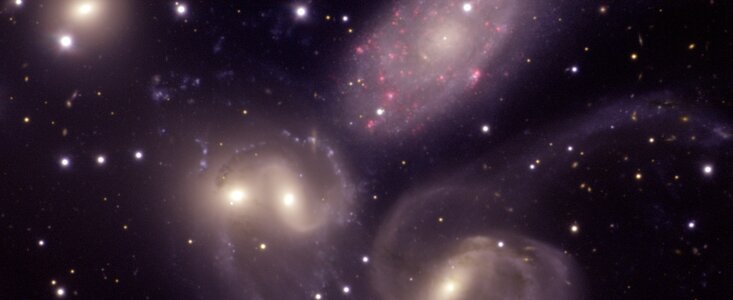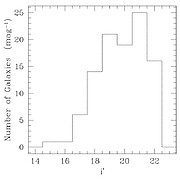Fossil group of galaxies shows dearth of low luminosity members
3 Enero 2006
Galaxy Clusters
Galaxies frequently appear in large numbers as physical units bound by gravity. The largest are the galaxy clusters with hundreds of members, and at the smaller end are the compact groups of galaxies with a maximum of about 10 members. Between these are the “fossil groups” with members numbering in the dozens. A fossil group of galaxies is a system with a large extended x-ray halo, dominated by one very luminous elliptical galaxy that is surrounded by low-luminosity companions.
Claudia L. Mendes de Oliveira (Universidade de Sao Paulo, Brazil) and her collaborators used GMOS, the optical imager/multi-object spectrograph on the Gemini North Telescope, to determine the first luminosity function (LF) of the galaxies in a fossil group based on spectroscopy of the member galaxies. The team observed the fossil group RX J1552.2+2013, and measured a mean redshift of z = 0.136 for 36 of its confirmed members. The main result indicates that not only is the bright end of the LF unusually scarce in bright galaxies, but there is also a pronounced dip in the luminosity function at the low luminosity end. RX J1552.2+2013 has a lack of faint galaxies at around absolute mag MR = -18 and fainter (see geminiann06001b).
One explanation of this lack of faint galaxies is that dynamical friction of the group’s orbiting galaxies causes them to loose their kinetic energy to the pool of dark matter particles. The result is that galaxies would spiral toward the mass center of the group to merge with the central galaxy. This works more efficiently for the more massive members of the group, but it does not work for less massive objects. A possible scenario that explains the lack of faint/small galaxies is the dimming or total disruption of the faint galaxies by a succession of tidal encounters. The smaller galaxies would be shredded apart as they circulate through the gravitational potential of the group. The debris of the disrupted galaxies is one of the possible sources of diffuse intracluster light and/or of large central elliptical envelopes commonly observed.
Enlaces
- “The luminosity function of the fossil group RX J1552.2+2013” by Claudia L. Mendes de Oliveira, Eduardo. S. Cypriano, & Laerte Sodré, Jr. published in The Astronomical Journal, 131, 158-167, 2006 January.



